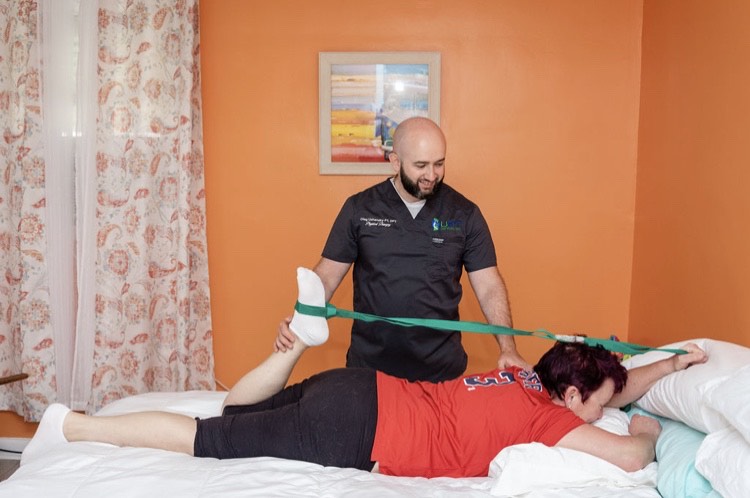
If you’ve recently had surgery, you’re probably willing to do almost anything to recover as quickly as possible so you can get back to doing the things you love to do.
That’s why you should follow any instructions given to you by your surgeon, nurses or the hospital staff. You may be instructed to rest, take certain medications or do specific activities to regain your strength, stamina and mobility.
It’s also a good idea to do physical therapy because it’s an effective tool in helping people recover from surgery. You may begin physical therapy while you’re still in the hospital or it may be recommended that you start once you’re home. Physical therapy isn’t only for people who have orthopedic surgery, like a hip or knee replacement. It can help people heal from almost any type of surgery.
Here’s why:
It helps improve strength, mobility and flexibility. After you have surgery, you’ll likely experience a reduction in strength, mobility and flexibility. This not only occurs in the area affected by the surgery but throughout your entire body due to inactivity. While physical therapy is a helpful tool after surgery, patients can benefit from PT for a variety of conditions and injuries.
Physical therapists are trained to help you regain your strength and mobility in ways that won’t jeopardize your health so you can get back to feeling like yourself again.
It helps ease pain and inflammation. Physical movement helps reduce the swelling, inflammation, stiffness and pain that often occurs following surgery. Although some people are concerned that physical therapy will cause more pain, typically the opposite is true. By reducing inflammation and restoring joint and muscle function, pain is often reduced. In fact, doing physical therapy may even make it less likely you’ll need to take pain medication.
It promotes healing. By increasing blood flow to the surgical area, physical therapy helps promote healing. Blood carries oxygen and nutrients through the body, so improving circulation helps reduce inflammation and aids recovery.
It reduces scar tissue. After surgery, you may develop a scar on your skin where any incision is made. But it’s the scar tissue that forms internally that can reduce mobility and function and become painful. Physical therapy helps prevent the formation of scar tissue and softens scar tissue that forms, improving flexibility and reducing pain.
It lowers the chance of complications. Moving your body instead of lying in bed or sitting on the couch all day lowers the chance that you’ll experience a complication after surgery, such as a blood clot or infection. Movement keeps your blood flowing and also reduces lung or heart-related issues.
When you begin physical therapy, a licensed professional will customize a program that specifically meets your needs and takes into account any health issues or limitations you may have.
It may seem scary to start exercising after surgery, but your rehabilitation will begin slowly and will progress as you are ready. In addition to supervised exercises, you may receive other forms of therapy and will likely be given instructions for activities to do at home. By following the advice of a physical therapist, it can set you on a path to a quicker and more complete recovery.


1 comment
At first, I was skeptical of crypto recovery services most seemed sketchy. But after hearing about Peritumrecovery{}com from someone I trust, I gave it a shot. They didn’t ask for any upfront payment and handled things more professionally than expected. Glad I took the chance might help someone else here too.